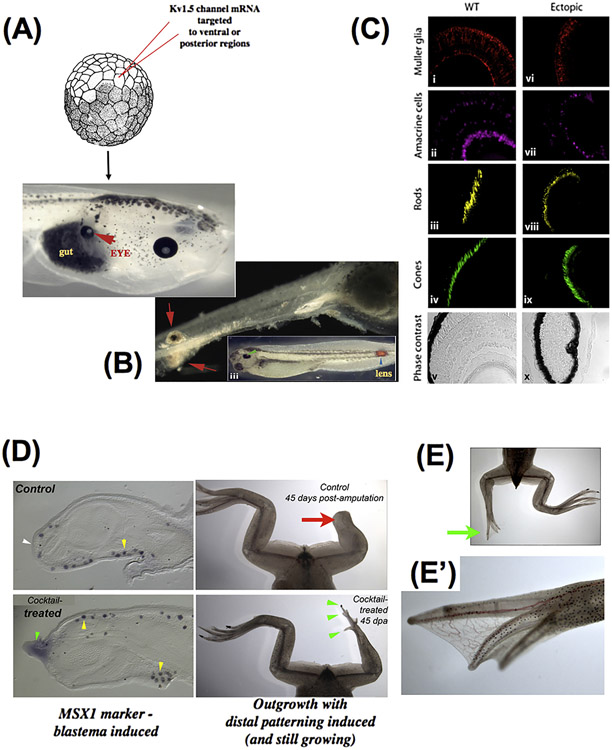Fig. 5.
Bioelectric modification of large-scale pattern.
Counter to early predictions that voltage outside the nervous system was a housekeeping parameter, it has been observed that specific alteration of resting potential patterns in vivo by misexpression of new ion channels can give rise to coherent, modular changes in anatomical arrangement. In Xenopus laevis, when specific ion channel mRNA is injected into embryonic blastomeres, regions of the animal – even those outside the anterior neural field – can be induced to form a complete eye. Eye structures can be induced inside the gut (A), tail, or spinal cord (B); in some cases, these eyes possess all the correct tissue layers of a normal eye (C), revealing master-level regulator control of organ formation (triggered by a simple manipulation, not micromanagement of individual cell fates and positions). These data also reveal the ability of bioelectric signals to overcome traditional limits on tissue competence (as, for example, the master eye gene Pax6 cannot produce eyes outside the head, and it was thought that gut endoderm was not competent to form eyes). (D) Drug cocktails using blockers and activators of endogenous channels can be used to trigger regenerative response; shownhere is a monensin ionophore cocktail inducing the expression of the MSX1 gene and subsequent regeneration of the leg (including distal elements such as toes and toenails, E, close-up in E’) in a post-metamorphic frog that normally does not regenerate legs. Images in A-C are reproduced with permission from (Pai et al., 2012). Images in D-E’ are the work of Aisun Tseng.

